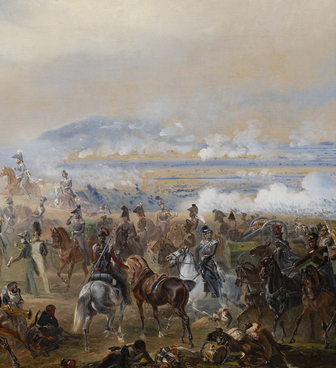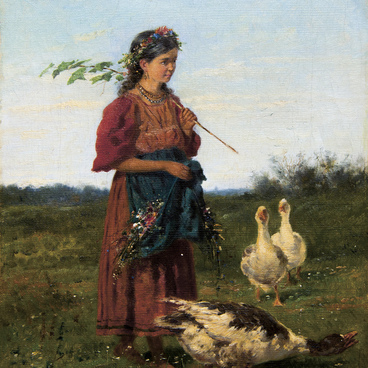Following the traditions of Russian academicism was required for any official and church commissions. In the Nizhny Tagil Museum of Fine Arts, this genre is represented by the painting “Jesus Heals a Man Born Blind”.
Although distinguished by high artistic skills and masterful composition, this painting gives a sense of indifference. It depicts a story from the Gospel describing one of the miracles of Jesus Christ — the healing of a blind man. The young man, blind from birth, sat near a church begging for alms. Most people ignored him and those who threw a coin into his lap did it out of vanity rather than kindness and mercy. As Jesus was leaving the church, after having publicly proclaimed Himself as the Eternal Son of God, He saw the blind man. The apostles asked Jesus,“Who sinned, this man or his parents, that he was born blind?”They believed that all misfortunes happened as punishment for the sins of parents, grandparents, and great-grandparents. Jesus answered them, “Neither this man nor his parents sinned, but this happened so that the works of God might be displayed in him. It is no one’s fault that this man was born blind.”Touching the young man’s eyes Christ said,“Receive your sight; your faith has healed you.”
Following the academic tradition, Vasily Khudoyarov divided the painting into three sections. The scene of the healing of the blind young man, the city in the distance, and the sky are framed by the castle walls and the fortified tower. Jesus and the blind man are placed in the center of the composition and highlighted with color — Christ is dressed in a red chiton (robe) and a blue cloak, and the blind man wears a white wrap. Christ is surrounded by the apostles who are divided into three groups and discuss the miracle performed by their teacher. The composition unfolds within a single plane, as if on stage. The former serf painter carefully designed the scene and painted in accordance with strict academic rules. However, at the left of the painting, there is a young woman carrying a basket with washed laundry back from the river. By adding this unexpected element, Vasily Khudoyarov adds a touch of relatability and wonders how often we might take no notice of a miracle happening while we are busy doing some day-to-day activities.
The artist himself sent the painting to Nizhny
Tagil. It was kept in the family burial vault of the Demidov mining
industrialists at the Vyysko-Nikolsky Church until the Russian Revolution of 1917.





